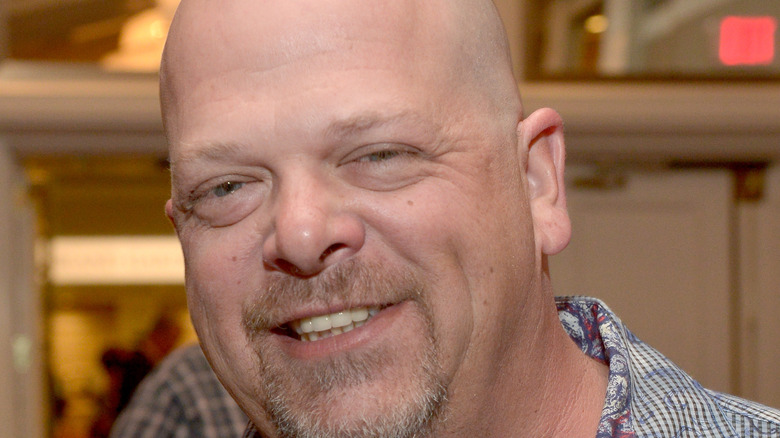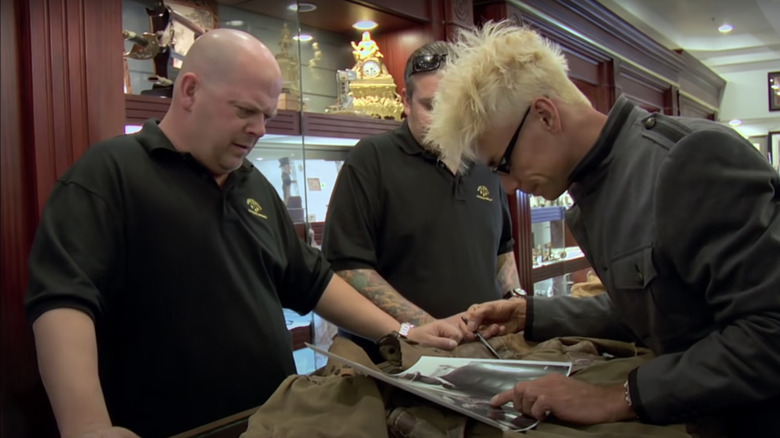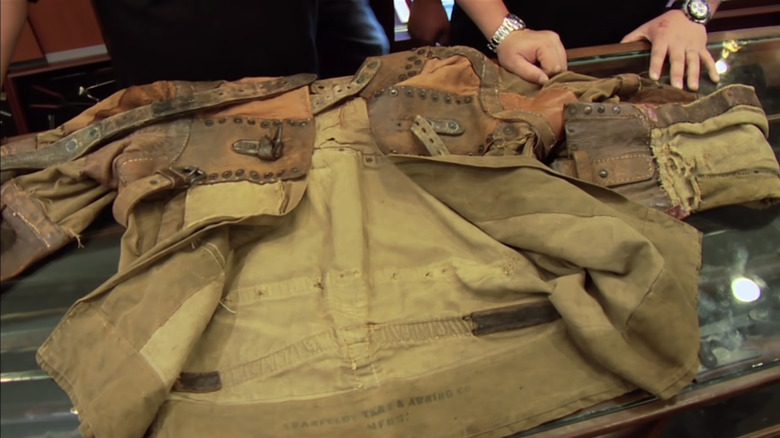The Unique Houdini Jacket That Was Worth Thousands On Pawn Stars
With "Pawn Stars" currently airing its 18th season on History Channel, fans are tuning in weekly to watch a new batch of antiques, heirlooms, and ephemera come through the doors of World Famous Gold & Silver Pawn Shop. But some of the most memorable pieces from seasons past left almost as quickly as they came in. This was the case with the Harry Houdini straitjacket that appeared on the show's fourth season. Seller William's grandfather gave him the jacket when he was a child, after having been gifted it by his friend Theo Hardeen, Houdini's brother. Now, William wants $100,000 for it, and naturally, Rick Harrison isn't so sure.
Besides the fact that $100,000 is a lot of money — even for the "Pawn Stars" millionaires — Rick is also uncertain of the straitjacket's authenticity, noting that Theo was notorious for selling fake Houdini collectibles. So, Rick calls on Murray SawChuck, a magician and magic historian, to see if he can trace the jacket's lineage back to the great illusionist.
Is the Houdini straitjacket a fake?
When Murray gets to the shop, he is immediately impressed by the straitjacket, and he soon finds a promising clue: the jacket was manufactured by Swanfeldt Tent and Awning Co., a favorite brand of Houdini's. William giggles with excitement, but Murray isn't done yet. He leaves to try to find a photograph of Houdini in this specific jacket from his personal collection of resources — the likelihood of which he describes as "a one-in-a-million chance." Miraculously, Murray returns to the shop with several photographs taken in St. Louis, Missouri, on January 1, 1915, that show Harry Houdini in a strikingly similar straitjacket to the one on the table before them. If these photos are of the jacket now in William's possession, that would make it at least 96 years old at the time the episode was aired.
Because the Swanfeldt straitjackets were handmade, Murray decides to count every stitch on the jacket to see if there are discrepancies with the photos. If the stitching is identical, then it is likely that the jacket was Houdini's. In the process, and to everyone's excitement, Murray finds several key similarities between the jacket and the photos: a rivet that has been flattened and an uncharacteristic double stitch. This is all the proof he needs to authenticate the straitjacket as having belonged to Houdini.
Rick Harrison gets down to business
William, the seller, is ecstatic over the news. In the post-authentication interview, he says, "Now that we've found out that it's real, I wish me and my cousins hadn't played so hard in it when we were five and six years old!" But will he get his $100,000?
Murray sets the Houdini straitjacket's value at $34,000 to $42,000, so William's six-figure ask is way too high. So, William says he wants $40,000, and Rick naturally counters with the lowball $15,000 because the jacket is in rough condition and he thinks it might take a while to sell. William responds with $35,000, to which Rick counters with $25,000. William wants to settle on $30,000, but Rick won't budge, so the seller walks away.
Realizing the deal he is about to lose, Rick almost runs after William, but practicality sets in — the profit he stands to make off the jacket is too low — so he lets it go, giving the episode's title "The Great Escape" a whole new meaning. Rick may have lost out on the Harry Houdini straitjacket, but with his estimated net worth of $8 million, the sting of yet another missed opportunity will likely be short-lived.


